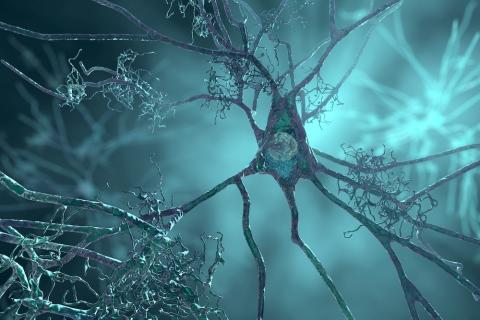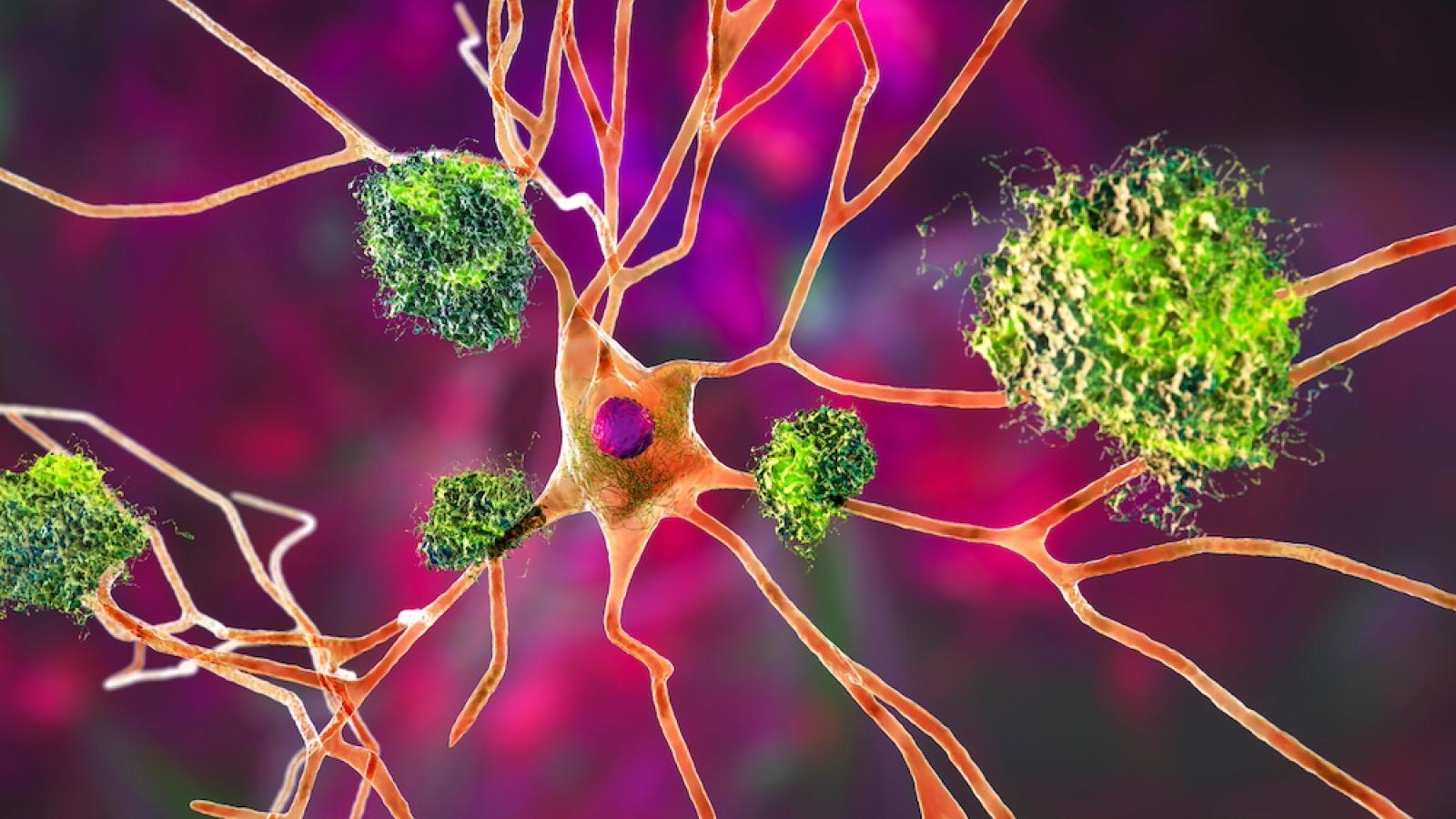A study co-led by Prof Paul Matthews (UK DRI at Imperial) and Prof Sir John Hardy (UK DRI at UCL) examining the relationship between amyloid beta and tau in Alzheimer’s, has revealed how accumulation of the proteins contributes to neurodegeneration early in the disease. The research, published in Nature Communications, helps explain why some neurons die in Alzheimer’s while others survive, and points to potential targets for future treatments.
What was the challenge?
The build-up of misfolded amyloid beta and tau protein, and the loss of neurons are central to Alzheimer’s disease. However, only a subset of cells are lost in the early stages of the disease. The precise identity of these neurons continues to be debated, in part because different approaches have been taken to characterise them. The mechanisms associated with neuronal loss also are uncertain.
In this study, the team aimed to define the specific subsets of neurons that are lost early in Alzheimer’s in a part of the brain called the neocortex, to explore how amyloid beta and tau together lead to neurodegeneration.
What did the team do and what did they find?
The researchers examined brain tissue from people who had died - some with Alzheimer's and some without the disease. They used advanced microscopy techniques to look at different types of brain cells in a region called the middle temporal gyrus, which is important for memory and thinking.
The researchers found that some neurons were much more vulnerable to damage than others. The cells that died had a specific characteristic: they accumulated amyloid beta protein inside them, starting very early in the disease process. Interestingly, other brain cells that accumulated tau but not amyloid survived just fine, even in advanced Alzheimer's.
Activated microglia, the brain’s resident immune cells, were found near the vulnerable neurons, suggesting an inflammatory response. Digging deeper, the team found that the vulnerable neurons had increased expression of genes involved in inflammation and glycosylation, the process of addition of sugar molecules to proteins in the cell. In later stages of disease, there was evidence for increased expression of genes coding for proteins involved in protein degradation.
Studies using post mortem human tissue are difficult but they allow us to gain insights impossible with the current widely used animal models alone. The search for fundamental mechanisms driving irreversible neuronal loss in Alzheimer’s disease needs greater focus on what genetics has been telling us for years - the relationship between glial activation, amyloid processing and tau.
Group Leader
What is the impact of those findings?
This study identifies specific subsets of neurons most vulnerable to loss in Alzheimer’s. It provides a direct link between microglial activation, the accumulation of amyloid beta inside neurons and their loss with disease progression.
The study provides additional evidence for a central role of amyloid beta in disease progression, indicating that neurons accumulating tau alone are not most vulnerable in the disease. These observations argue for greater future focus on the accumulation of amyloid beta in early disease, in the search for new therapies.
First author Dr Alessia Caramello said:
“It has been exciting to be able to robustly define the specific types of neurons that degenerate in Alzheimer’s disease using complementary technologies. At the same time, we have extended our understanding on the role of amyloids in the early disease which may support development of targeted preventive therapies.”
Prof Sir John Hardy, co-lead of the project said:
“It was a real pleasure to be a small part of this really interesting work and we hope that others will not only find the results themselves interesting but will also find the panel of validated antibodies useful in their studies.”
Reference: Caramello A, Fancy N, Tournerie C, Eklund M, Chau V, Adair E, Papageorgopoulou M, Willumsen N, Jackson JS, Hardy J, Matthews PM. Intracellular accumulation of amyloid-ß is a marker of selective neuronal vulnerability in Alzheimer's disease. Nat Commun. 2025 Jun 4;16(1):5189. doi: 10.1038/s41467-025-60328-w. PMID: 40467545; PMCID: PMC12137956.
Banner image: Shutterstock/Kateryna Kon


